
Mobile devices have become an integral part of our daily lives. With people spending more time on their phones than ever, social media platforms such as Facebook (Meta) and Instagram have become crucial channels for eCommerce businesses to connect with their target audience.
What that means for digital marketers is adapting advertising strategies to deliver fast-loading and engaging mobile experiences. This is where collection ads come in—an ad format that allows companies to showcase their products in a visually compelling and interactive way while keeping users within the social media platform.
In this article, we will dive deeper into how Meta collection ads work, the benefits they offer for eCommerce, tips and best practices for creating successful ads, and how to incorporate them into your advertising strategy. This article will also include real-life examples from managing our clients’ accounts of how successfully utilizing this ad format can drive engagement, conversions, and sales.
What is a collection ad?
Collection ads are a mobile-friendly ad format that allows customers to move from discovery to purchase in a smooth and immersive way. They are available on various social media platforms, including Facebook, Instagram, and Snapchat.
A collection ad can show up to 4 products in an ad and features a primary video or image with three smaller accompanying images below in a grid-like layout. When customers tap on the collection ad to browse or learn more, they are taken to a fast-loading fullscreen experience without leaving Facebook (Meta) or Instagram. Users can then click on any of the product images to browse through more products in the collection.
Collection ads create a seamless and enjoyable experience for users to research products and their prices without/before visiting the website, increase brand awareness, and open the door for product upselling. They are an excellent choice for businesses that want to showcase multiple products within a single ad and drive traffic to their website or mobile app.
How do collection ads work?
The user can view all products of a product category promoted in the collection ad (for example, TVs) and then click on a product which leads to a direct page of that particular product on the website due to dynamic URLs.
Collection ad templates are fully customizable, and advertisers can group products into sections they want to promote or leave it to AI, which groups and shows products based on user behavior, interests, and previous experience with ads or based on products the user looked at on the website previously (retargeting).
Facebook (Meta) collection ads
Following the trend of users enjoying video format and easy access to products, Facebook introduced a mobile-only advertising format—Facebook (Meta) collection ads that provide a streamlined and interactive experience for users, making it easier for them to engage with the ad and make a purchase.
Pros and cons of Meta collection ads
While Meta collection ads have become increasingly popular, you should weigh the advantages and disadvantages of using this ad format in your advertising strategy. In this section, we will explore the pros and cons of collection ads, helping you decide whether they fit your business.
Pros of collection ads
- Diversified product promotion
One of the main benefits of Meta collection ads is their ability to showcase various products within a single ad, making them particularly useful for large eCommerce businesses with a wide range of products to promote. Instead of creating separate ads for each product, Meta collection ads enable companies to promote multiple products diversified by product type/categories in one campaign.
- Ease of creation
Meta collection ads are automatically created and directly updated based on a data feed, which saves businesses valuable time and resources. With a dynamic information-gathering system, marketers can easily update and refresh their product offerings within their ads without manually creating and updating each ad. The automation process also ensures that the ad content remains up-to-date and accurate, reducing the risk of displaying outdated or incorrect product information.
- Personalized approach
With the help of retargeting settings, businesses can show products to individual customers based on their interests and purchase intent and tailor ads to their specific needs and preferences. For instance, if a customer has previously viewed a particular product on the eCommerce website, Meta collection ads can be used to showcase related products or complementary items, thus increasing the chances of the customer making a purchase. A personal approach can also help businesses connect with their audience on a deeper level, fostering customer loyalty and increasing the likelihood of repeat purchases.
- Different ad templates
Meta collection ads offer a range of ad templates to enhance the mobile experience, like Instant Storefront, Instant Lookbook, Instant Customer Acquisition, AR experience, and Digital Circular. These formats cater to different customer preferences, helping businesses to improve the browsing and shopping experience and ultimately drive more sales.
Instant Storefront allows businesses to showcase their entire product catalog in a single ad.
Customers can browse the products and purchase without leaving the app if the advertiser has turned on Facebook Pay (otherwise, they have to visit the website).
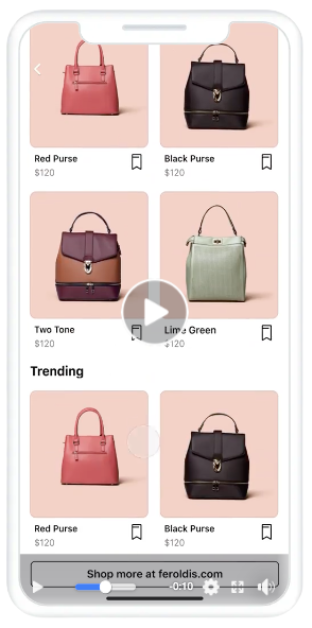
Instant Lookbook enables businesses to showcase their products in a lifestyle setting.
This ad format is ideal for companies that sell fashion or home decor products, as it allows customers to envision how the products might look in a real-life setting.
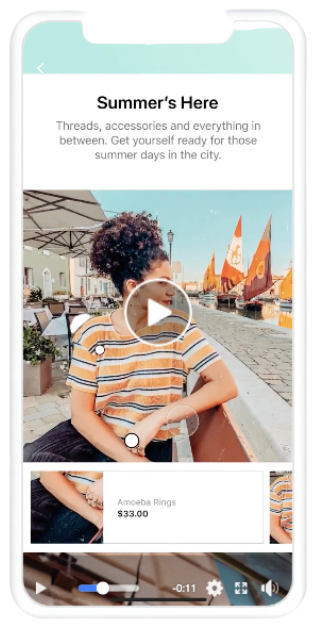
Instant Customer Acquisition helps businesses to acquire new customers by offering an incentive for the first purchase.
This format is particularly effective for companies trying to increase their customer base and sales volume.
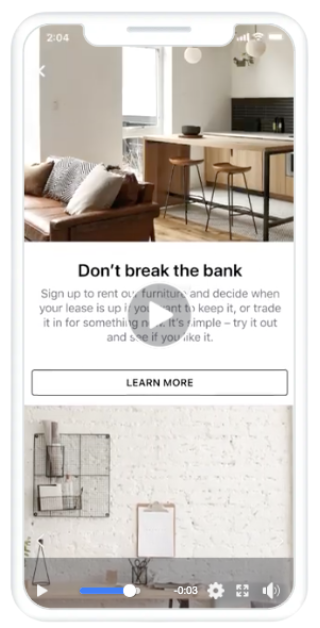
AR experience allows customers to interact with products in an augmented reality setting, helping them visualize the product and make a more informed purchase decision.
Digital Circular replicates the experience of flipping through a traditional paper circular—ideal for businesses that want to promote products more traditionally.
Cons of collection ads
- Available only for mobile users
One of the main disadvantages of Meta collection ads is that they are available only for mobile users. Businesses may miss out on potential customers primarily using computers. Additionally, some users may not have access to the latest mobile devices or prefer to use other platforms for their online shopping needs.
- Requires extensive A/B testing
Because the ads are highly visual and rely on engaging imagery and product sets, Meta collection ads require significant testing to optimize their performance. Businesses need to conduct extensive A/B testing to determine which ad formats and product combinations work best, and it may take several rounds of testing before identifying the most effective strategy.
Meta collection ad best practices
Here are some best practices to keep in mind to help you get the most out of your Meta collection ad campaigns!
- Start with a clear goal—before creating your ad, it’s important to define your campaign objectives. Do you want to increase sales? Drive traffic to your website? Improve brand awareness? Defining your goals upfront will help create a more targeted and effective campaign.
- Use high-quality visuals—Meta collection ads rely heavily on visually engaging content to capture users’ attention. Make sure to use high-quality product images or videos that highlight the unique features and benefits of your products, and use clear, eye-catching text to provide context and guide users to take action.
- Test different ad formats—Meta collection ads offer a range of ad formats and templates. See which ones resonate most with your audience and drive the best results.
- Optimize product sets—experiment with different product sets to see which combinations perform best. Use data insights to refine your product sets and feature products that are most likely to resonate with your target audience.
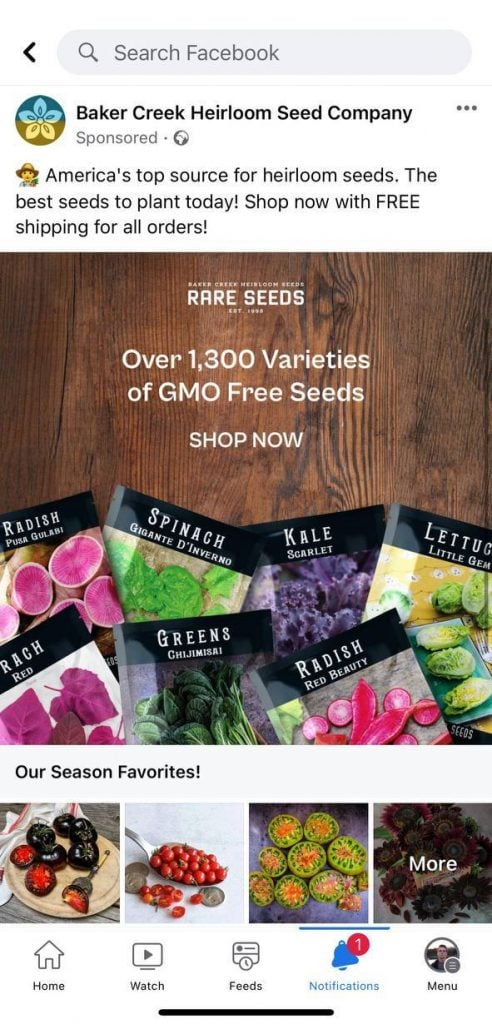

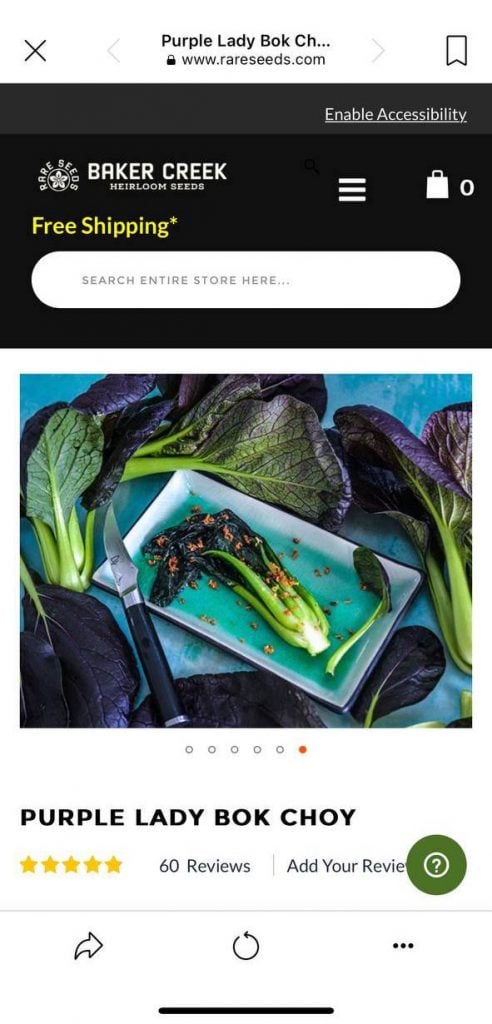
Meta collection ads: a real-life example
scandiweb’s PPC team tested collection ads for several eCommerce businesses. Collection ads can be launched for any company that conducts online sales through a catalog and has a data feed. Clients showcased in this case study had previous experience with Meta ads by managing the ads themselves or working with agencies, and it was up to scandiweb to get better results.
Approach
The clients’ main objectives were to upsell products, show multiple products in one ad, and improve the ad campaign results, so collection ads seemed like the ideal format to test.
Since this format was relatively new, we had to look at all the metrics to understand if it was worth it. The main KPIs to keep track of were:
- ROAS
- CPC
- Conversion rate
- CTR
Based on these criteria, a dedicated PPC Strategist worked towards turning our clients’—thegoodlife., Rare Seeds, Bulk Herb Store, and Home Folk—accounts into profitable paid media channels using Meta Ads.
Steps to launch Meta collection ads
- Define products/product categories we want to promote
- Create a set of products from the catalog (data feed)
- Choose the collection ad type
- Come up with groups or sections to show products in the ad itself
- Add a CTA on the button at the end of the ad
- Write copy for the general ad text and front banner
- Launch the ad!
Results
When we analyzed campaign performance, we found that collection ads are more efficient than standard single-image or video ads. While the cost per action (CPA) and conversion rate remain similar, the average order value increases by 35% on average, thus increasing ROAS.
Results for the last 30 days compared to classic ads, based on four scandiweb PPC clients
- +62% return on ad spend (ROAS)
- +35% average order value (AOV)
- -34% cost per click (CPC)
- +32% click-through rate (CTR)
Ready to start advertising on Facebook or want to optimize your current ad setup? Our PPC strategists can ensure you minimize spend and maximize your social advertising efforts. Email us via [email protected] or use our contact page, and we’ll get back to you within 48h!
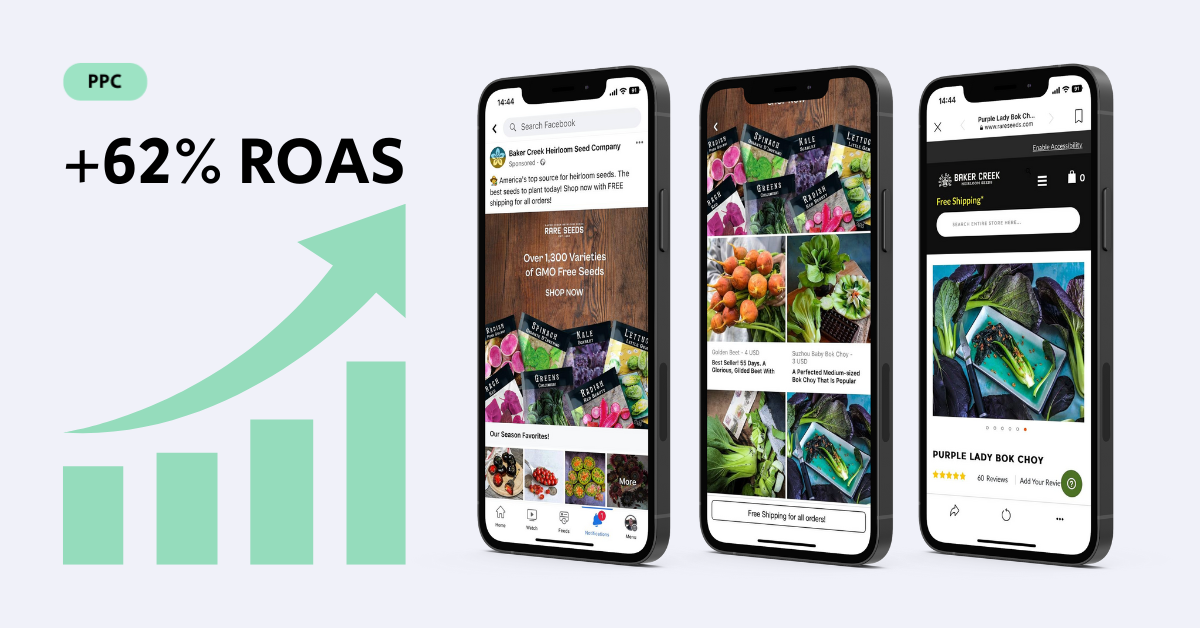
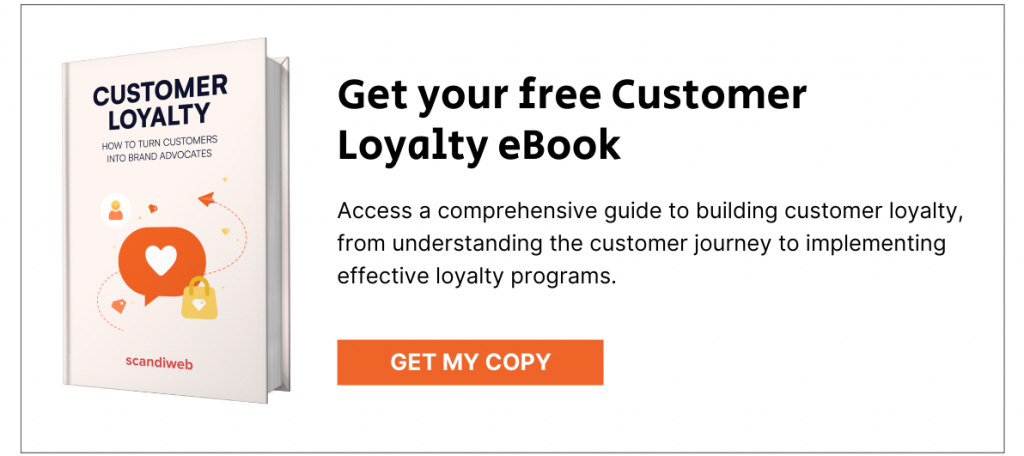

Share on: